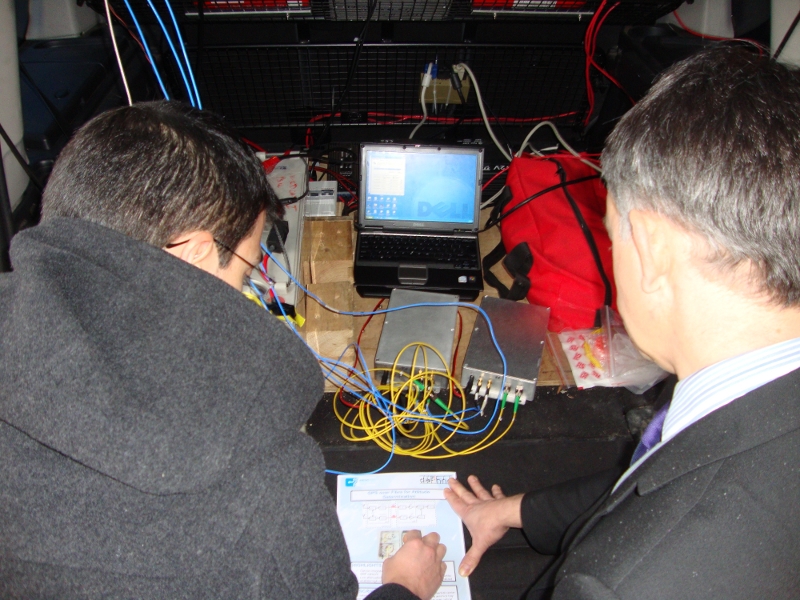INESC TEC demonstrates GPS over optical fibre as part of European project
On 23 January, INESC TEC’s Telecommunications and Multimedia Unit (UTM) was in Bristol, UK, to participate in a meeting with the partners of European project DAPHNE, a project about optical fibre communication systems for civil aircrafts.
27th February 2013
At the meeting, the consortium discussed and demonstrated technology that is now in its conclusion phase (the project will be concluded by the end of February). The UTM researchers demonstrated work related to GPS signal transmission over single mode optical fibres to determine the attitude (orientation towards the horizon) of aircrafts.
The infrastructure contains two antennas (Base and Rover) which were placed on top of a demonstration vehicle from BAE Systems. According to the researchers, this is enough to assess performance in Real Time Kinematic (RTK) mode by calculating the phase difference between signals received. This demo is innovative due to the transparent use (instant operation) of optical fibre systems to transmit GPS signals. The demonstration was successful and the feedback from the partners was quite positive, especially from aircraft builders (Agusta Westland and Airbus), which are now thinking of using this technology in their models.
The DAPHNE consortium consists of 15 European partners, including INESC TEC. The aim with this project is to introduce the most advanced optical fibre communication network technology in future aviation fleets. With this project, the entire communication infrastructure of the aircrafts will be optimised, thus guaranteeing important savings relatively to cable installation and maintenance. Optical fibre technology is advantageous not only for commercial but also for military aviation because it is light, small and highly immune to interference comparatively to copper.


